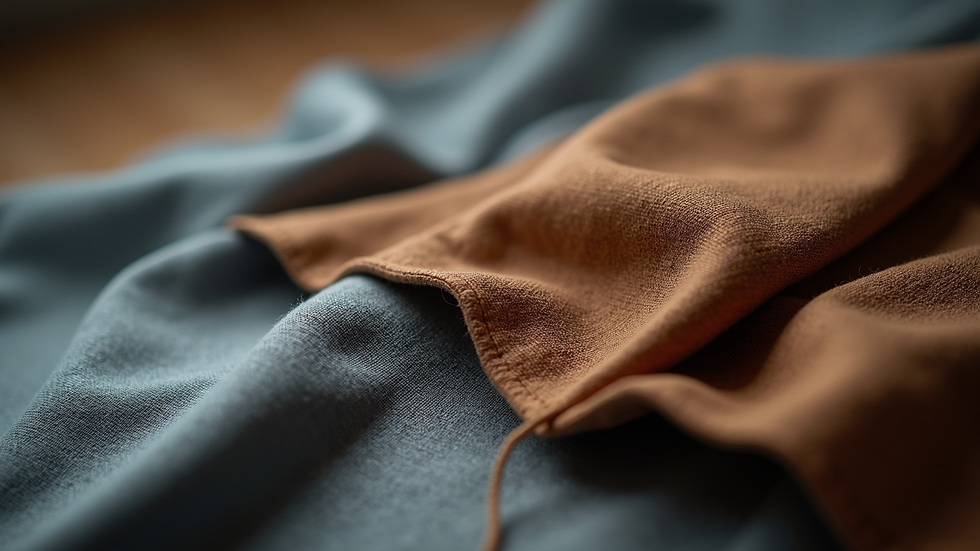Key Features to Look for in Textile Processing Machinery
- Jul 15
- 4 min read
Textile processing machinery is essential in the manufacturing and manipulation of fabrics and materials used in various industries. When investing in textile processing machinery, it's crucial to identify key features that enhance productivity, efficiency, and ease of use. This blog post will guide you through the most important aspects to consider, whether you're looking to upgrade existing machinery or invest in new equipment.
Processing Machinery: A Backbone of Textile Industry
In the fast-paced world of textile production, processing machinery plays a vital role in transforming raw materials into finished goods. Different types of machinery are used in each stage of textile processing, from spinning fibers to weaving and finishing. Understanding the capabilities of these machines will help optimize manufacturing processes and lead to better quality products.
One of the fundamental features to assess in textile processing machinery is automation. Modern machines equipped with automation capabilities can significantly reduce labor costs and improve productivity. For instance, machines with automatic thread tension control ensure consistent quality in weaving, making them invaluable for large-scale production. Additionally, look for machinery with user-friendly interfaces that provide easy monitoring and adjustments.

Types of Processing Machinery: Understanding the Basics
Before diving into specific features, it's essential to grasp the types of processing machinery available in textile mills.
Spinning Machines: These machines convert fiber into yarn, which is the foundation for fabric production. Different spinning techniques, such as ring spinning and open-end spinning, yield various yarn qualities.
Weaving Machines: These machines interlace yarn to create fabric. Jacquard looms allow intricate patterns, while shuttleless looms increase speed and efficiency.
Knitting Machines: These machines create fabric by interlocking loops of yarn. Circular knitting machines are often preferred for their ability to produce seamless tubes of fabric.
Finishing Machines: After weaving or knitting, fabrics undergo finishing processes like dyeing, printing, and softening, all of which require specific machinery tailored to the desired effect.
Understanding these types of machines will help you choose the right equipment depending on your production needs.
What are the Machines in Textile Mills Called?
Machines used in textile mills include a variety of specialized equipment that address different processes in fabric production. Some commonly referred types include:
Carding Machines: Used to untangle, straighten, and mix fibers to create a continuous web.
Draw Frames: These machines prepare yarn by drawing out and aligning fibers, improving quality before spinning.
Warping Machines: Used to arrange yarn strands in preparation for weaving.
Sewing Machines: While not necessarily exclusive to textile manufacturing, these machines are essential in assembling fabric into finished products.
Identifying the right type of machinery is crucial for efficiency and productivity in textile processing.

Key Features to Consider in Processing Machinery
When evaluating textile processing machinery, consider the following key features that can make a significant impact on your production line:
Speed and Capacity: Consider the speed of production. Machines that offer high-speed outputs can drastically improve efficiency. For example, a weaving machine capable of producing 1,200 picks per minute can significantly lower production time and costs.
Energy Efficiency: Energy consumption is a critical factor given the increasing focus on sustainability. Look for machinery that is designed with energy-saving technologies that not only reduce costs but also support your organization's environmental goals.
Maintenance Requirements: The ease of maintenance can greatly influence the long-term operational costs of the machinery. Opt for machines with easy access for repairs and parts replacement. Some manufacturers even offer smart technology that warns users of necessary maintenance.
Flexibility and Versatility: A machine that can handle multiple processes will save on investment and floor space. For instance, a dyeing machine that can work with both natural and synthetic fabrics maximizes its utility.
Technological Integration: Modern machines that can integrate with Industry 4.0 technologies allow for real-time monitoring, data collection, and process optimization. This feature should be a priority for those looking to modernize their textile production.
These features not only enhance productivity but also ensure that the machinery can adapt to changing market demands.

Importance of Sourcing from Reputable Manufacturers
When selecting textile processing machinery, partnering with trusted and skilled manufacturers is crucial. Well-known textile processing machinery manufacturers have established reputations for quality and reliability. They often provide extensive support, including training and maintenance services.
Moreover, consider the availability of spare parts and after-sales support. A manufacturer with a robust service network can help minimize downtime and keep your operations running smoothly. Research and reviews can help you make informed decisions when choosing the right partner.
By investing in quality machinery from reliable sources, you ensure that your production meets industry standards and consumer expectations.
Final Thoughts on Textile Processing Machinery
Investing in the right textile processing machinery is essential for boosting production efficiency and product quality. From understanding the different types and features of machines to sourcing from credible manufacturers, every step matters. Focus on automation, speed, energy efficiency, flexibility, and technological integration when enhancing your machinery lineup.
When appropriately implemented, these technologies can not only improve production quality but also lead to significant cost savings and a competitive edge in the marketplace. For more insights on the industry, check out some leading textile processing machinery manufacturers at Serve Tex.
Taking the time to evaluate and invest in the right machinery will yield dividends for your textile operations in the long run.





Comments